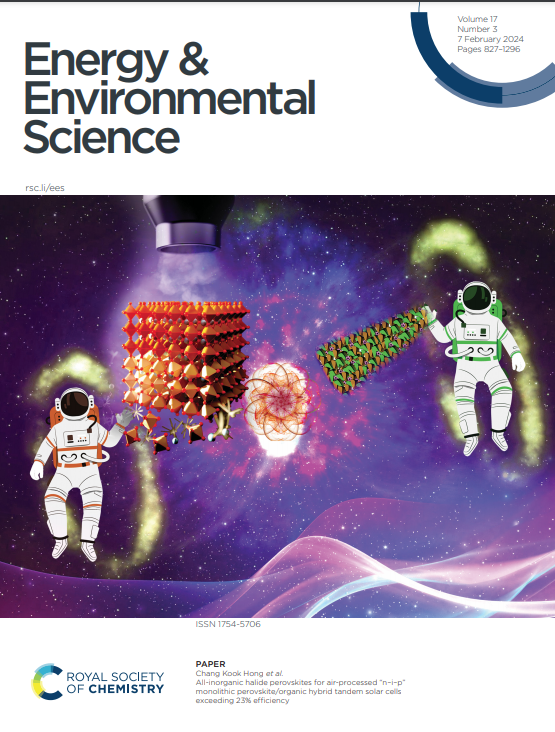一种新型储碳建筑材料的生命周期评估框架
IF 30.8
1区 材料科学
Q1 CHEMISTRY, MULTIDISCIPLINARY
引用次数: 0
摘要
目前,材料的材料生产占人为二氧化碳排放量的25%以上。然而,由于它们的长寿命和巨大的生产规模,一些建筑材料为大气碳储存提供了一种潜在的手段。准确的排放核算是了解这一潜力的关键,但生命周期清单(LCI)数据库难以跟上各种新型材料的步伐,并提供准确表征其对净二氧化碳当量(CO2e)排放和吸收的影响的数据。为此,我们提供了一个使用热力学第一原理从头开始开发lci的框架,并在第一原理方法不可用时,为从有限数据中表征材料lci的替代方法提供指导。该框架提供了一种可推广的方法来开发和比较新材料生产的LCIs。为了确保该框架的准确性并提供其应用的逐步示例,我们考虑了以下矿物基和生物基建筑材料:波特兰水泥,低碳钢,石膏板,黄杨和东部铁杉的交叉层压木材,与现有的LCIs表现出良好的一致性。该框架的制定特别侧重于描述材料生产的二氧化碳排放量和能源消耗,但它可以扩展到其他环境影响或应用。基于第一性原理的初始LCIs可以指导新材料和工艺的早期设计,以最大限度地减少二氧化碳排放或提高跨部门关键材料的碳固存潜力。本文章由计算机程序翻译,如有差异,请以英文原文为准。
A framework for ground-up life cycle assessment of novel, carbon-storing building materials
Currently, materials production of materials is responsible for over 25% of anthropogenic CO2 emissions. However, due to their long-lived nature and enormous scale of production, some building materials offer a potential means for atmospheric carbon storage. Accurate emissions accounting is key to understanding this potential, yet life-cycle inventory (LCI) databases struggle to keep up with the wide array of novel materials and provide the data to accurately characterize their effect on net carbon dioxide equivalent (CO2e) emissions and uptake. To this end, we offer a framework for developing LCIs from the ground up using thermodynamic first principles and provide guidance on alternative approaches to characterize material LCIs from limited data when first principles approaches are not feasible. This framework provides a generalizable methodology to develop and compare LCIs of novel material production. To ensure the accuracy of this framework and provide step-by-step examples of its application, we consider the following mineral-based and bio-based building materials: Portland cement, low-carbon steel, gypsum board, and cross-laminated timber from yellow poplar and from eastern hemlock, showing good agreement with existing LCIs. This framework is developed with a particular focus on describing CO2e emissions and energy consumption of material production, but it could be extended to other environmental impacts or applications. Grounding initial LCIs in first principles can guide the early-stage design of novel materials and processes to minimize CO2e emissions or improve the carbon sequestration potential of critical materials across sectors.
求助全文
通过发布文献求助,成功后即可免费获取论文全文。
去求助
来源期刊

Energy & Environmental Science
化学-工程:化工
CiteScore
50.50
自引率
2.20%
发文量
349
审稿时长
2.2 months
期刊介绍:
Energy & Environmental Science, a peer-reviewed scientific journal, publishes original research and review articles covering interdisciplinary topics in the (bio)chemical and (bio)physical sciences, as well as chemical engineering disciplines. Published monthly by the Royal Society of Chemistry (RSC), a not-for-profit publisher, Energy & Environmental Science is recognized as a leading journal. It boasts an impressive impact factor of 8.500 as of 2009, ranking 8th among 140 journals in the category "Chemistry, Multidisciplinary," second among 71 journals in "Energy & Fuels," second among 128 journals in "Engineering, Chemical," and first among 181 scientific journals in "Environmental Sciences."
Energy & Environmental Science publishes various types of articles, including Research Papers (original scientific work), Review Articles, Perspectives, and Minireviews (feature review-type articles of broad interest), Communications (original scientific work of an urgent nature), Opinions (personal, often speculative viewpoints or hypotheses on current topics), and Analysis Articles (in-depth examination of energy-related issues).
 求助内容:
求助内容: 应助结果提醒方式:
应助结果提醒方式:


